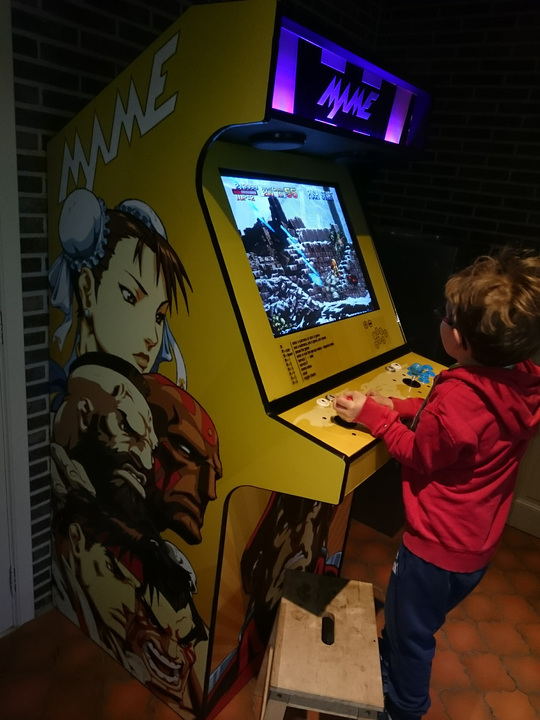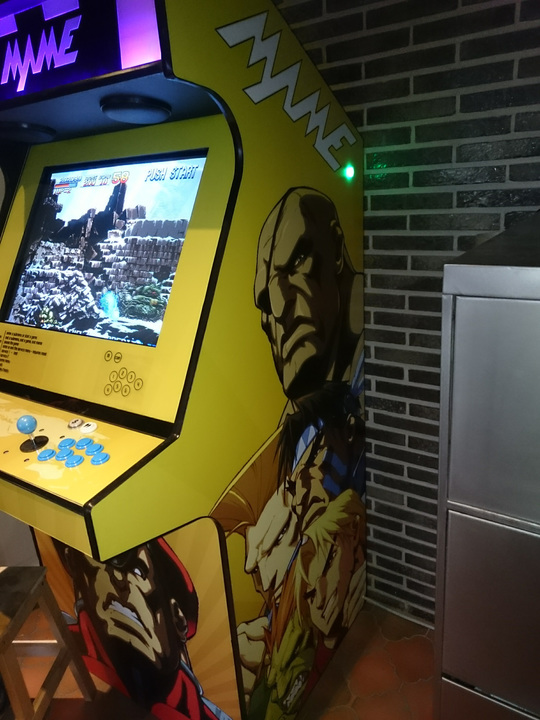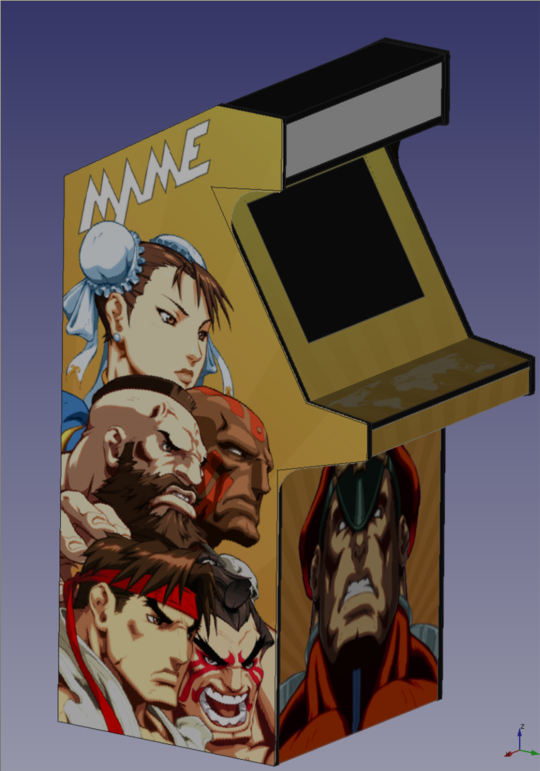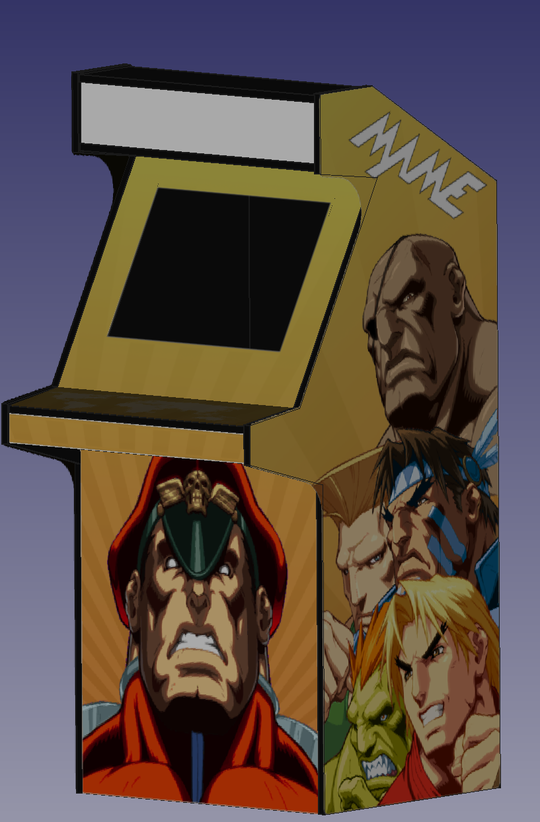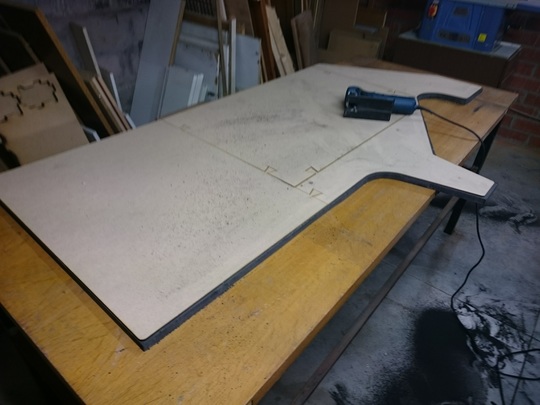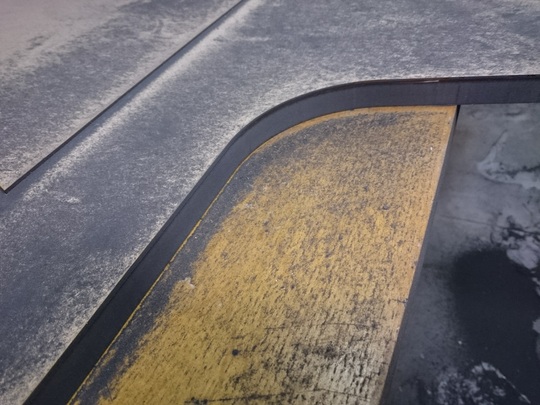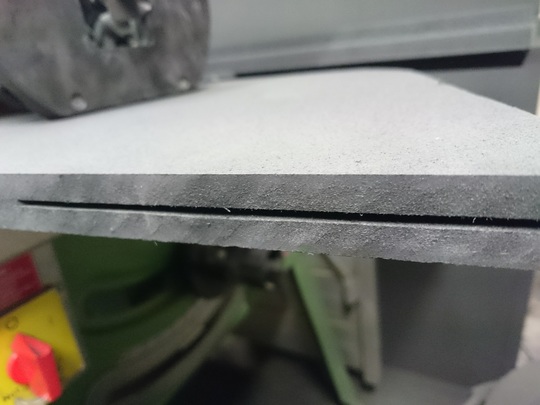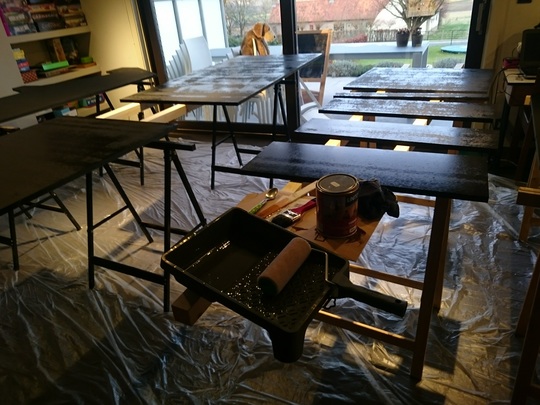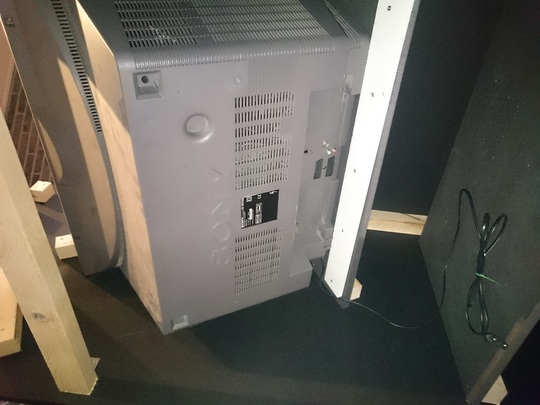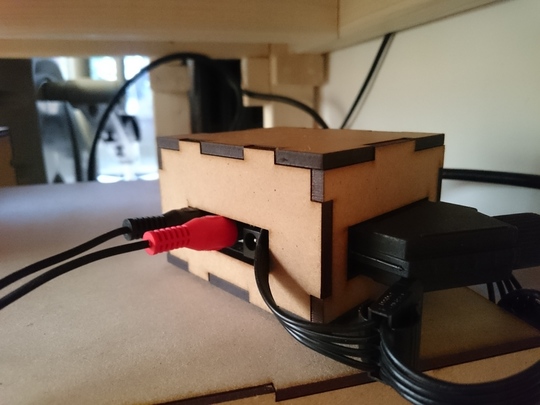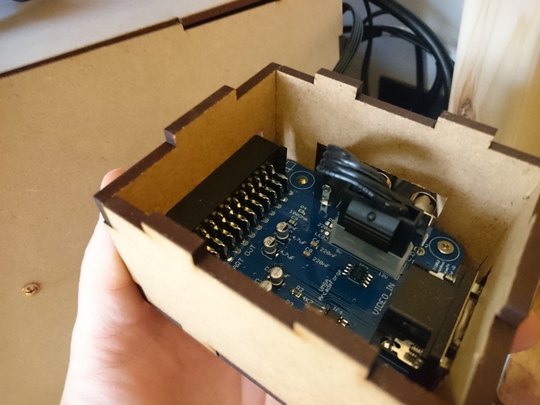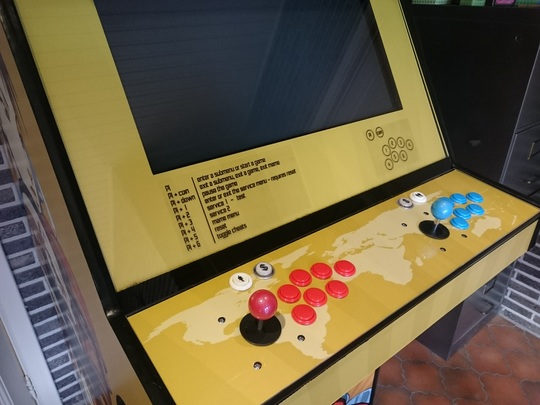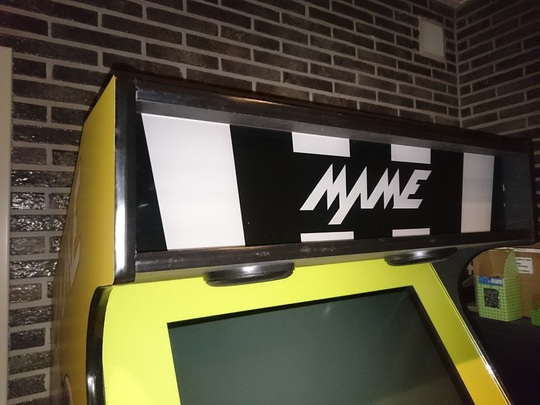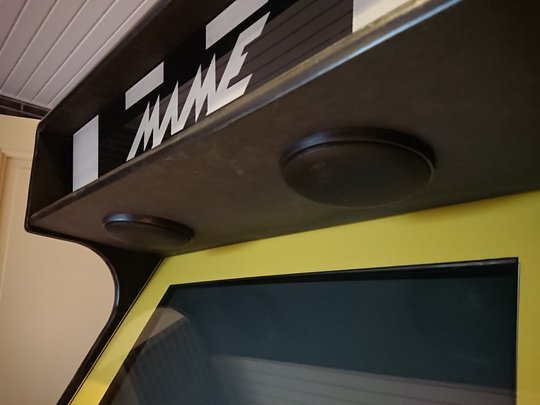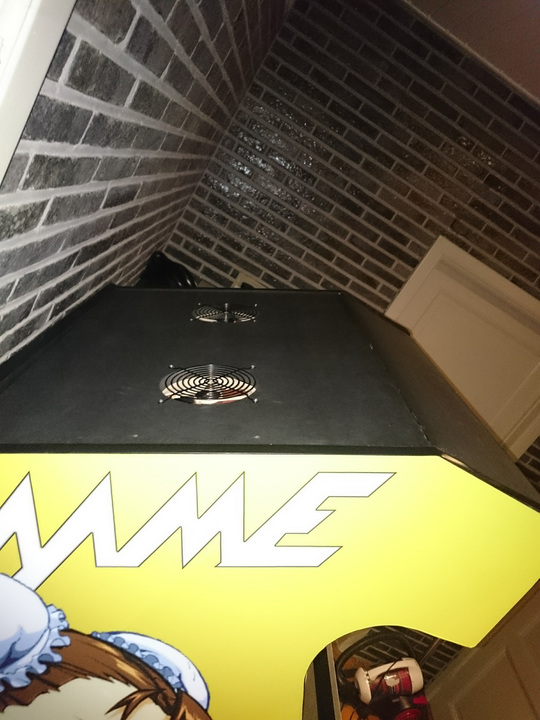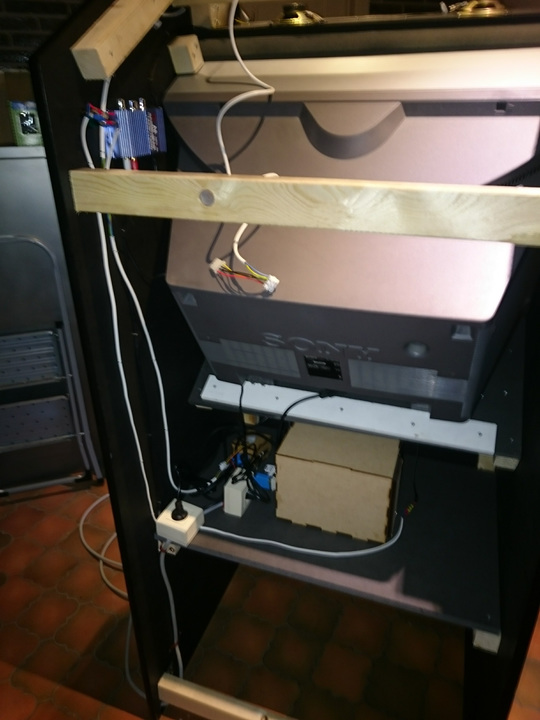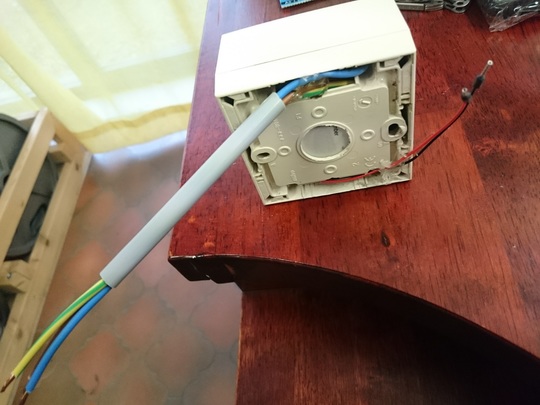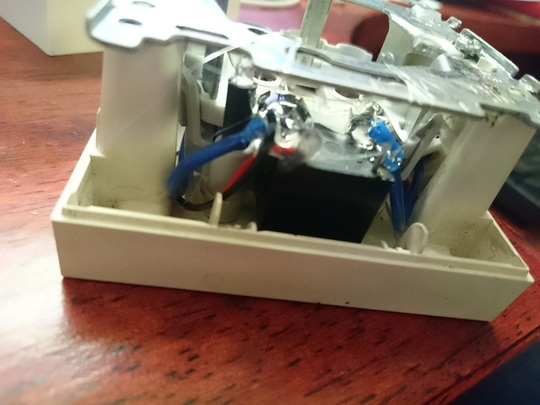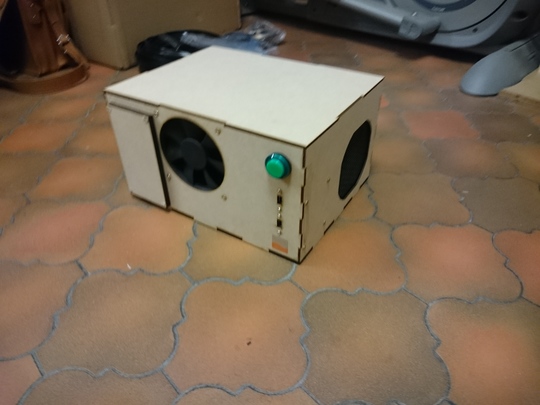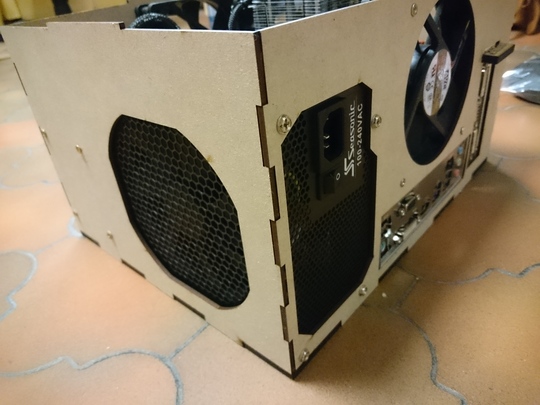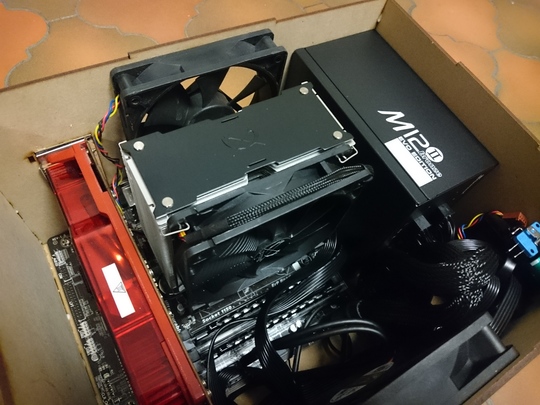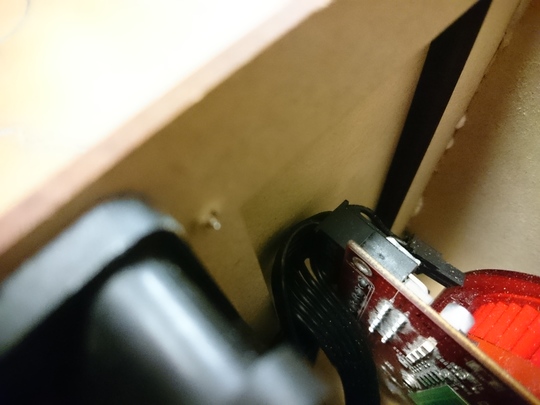bernieke's projects - arcade
last update in subtext
Something for both me and the kids. Which geek doesn't want an arcade machine in his house?
My requirements for building the arcade:
- it had to have an old fashioned CRT display
- look like it could've come straight from an arcade
- be setup to play foremost fighters & beat'm ups
- be fast enough to not only play the newest mame games, but also emulate PlayStation 2, Model 2 & 3, Dreamcast and Taito games, and run Street Fighter V
I first designed the machine in freecad.
Afterwards I exported the parts to qcad to get the final dimensions.
The graphics were made up in Gimp (the Street Fighter characters I found online), and printed on vinyl stickers.
Using the lasercutter I made a template (using puzzle like connectors) which I screwed to the MDF boards. I used a jigsaw to do the rough cut, and cleaned this up using a router with a templating bit. And then routed the slots where the T-molding would be fitted.
I then lacquered all the MDF, both for some water proofing, as to make sure the vinyl stickers would stick well. (They like a smooth surface.)
The monitor is a 29" Sony Trinitron television (which weighs in at 46kg!), hooked up through it's SCART input, through the UMSA SCART adapter over VGA to the grahpics card.
All this, combined with the crt_emudriver, makes for an arcade-perfect monitor.
I did have to trim a bit of plastic off the front of the television to get the bezel to sit flush.
I put a thin MDF lasercut bezel around the monitor, with a 6mm thick pane of glass in front. To the back of the glass I attached transparant stickers explaining the controls (printed mirrored.)
I used Ultimarc ServoStik sticks which automatically switch between 8 and 4-way depending on the game.
The buttons are Seimitsu PS-14G-GN 30mm screw in buttons, hooked up to two Ultimarc Mini-PAC controllers. I had to use two as otherwise pressing the P1 button (which is also used as the shift button), would cause player 2 his button presses to get lost.
I lasercut a few layers of MDF plus a layer of acrylic to screw the buttons and electronics to.
The panel can be easily lifted out when access to the internals is required.
For the marquee I lasercut the protective plastic masking of the acrylic. I then removed part of the cut masking and spray painted the acrylic, after which I removed the rest of the masking.
Below the marquee, in a routed groove in the MDF, sits an RGB led strip which cycles through its color range.
The speakers sit above the monitor.
And on the back are two ventilators which provide airflow from the bottom of the machine (the front and back have about 1cm clearance to the ground) over the pc and television.
There's a lighted arcade button on the side of the machine, which acts as the computer power button.
A relay is hooked up to the computer's serial port, which causes the monitor and speaker amplifier to power up when the computer is turned on. (And back off when the computer is shut down.)
The components for the PC:
- GigaByte GA-Z97M-DS3H motherboard
- Pentium G3258 (anniversary edition) CPU
- 8GB RAM
- 500GB Samsung EVO 850 SSD
- Scythe Kotetsu CPU cooler + 2 Noctua NF-A14 FLX case fans
- Seasonic M12II-520 EVO PSU (after having had problems in the past with other brands, I now only ever buy Seasonic PSUs anymore)
- a secondhand ATI HD4870 graphics card
I picked the G3258 since the most important thing for emulation is single core performance. You can offload the audio emulation to a second core, but that's it. So there's really no point in getting a quad or more core CPU. And the G3258 is not only very affordable, it also has a 3.2GHz base CPU frequency, and can easily be overclocked to +4GHz.
Since I wanted to run crt_emudriver I was very limited in my choice of graphics cards. Luckily a friend had an old ATI card which fit the bill.
I'm not normally a gamer, and since I almost always run Linux or some variant of Unix on my machines, I usually buy my machines with onboard Intel graphics chipsets. Which is why the size of this ATI card rather took me by surprise (it's longer than the motherboard.) And necessitated my recutting and patching of the case I'd build for the PC...
created: 2016/12/21 last updated: 2017/11/29
